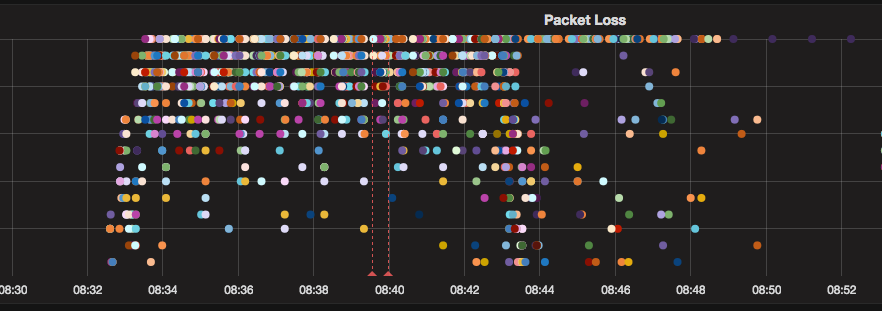On the Lossiness of TCP
When someone tells you that “TCP is a lossy protocol” during a job interview, don’t throw him out immediately – he was just trusting the Internet a bit too much (click to enlarge).
Everyone has a bad hair day, and it really doesn’t matter who published that text… but if you’re publishing technical information, at least try to do no harm.
Read more ...A post-mortem on this morning’s incident
We would like to share more details with our customers and readers on the internet outages that occurred this morning and earlier in the week, and what we are doing to prevent these from happening again.
June 17 incident
On June 17, at 08:32 UTC, our systems detected a significant packet loss between multiple destinations on one of our major transit provider backbone networks, Telia Carrier.
In the timeframe where the incident was being analysed by our engineers, the loss became intermittent and finally disappeared.

Today’s incident
Today, Jun 20, at 12:10 UTC, our systems again detected massive packet loss on one of our major transit provider backbone networks: Telia Carrier.

Typically, transit providers are very reliable and transport all of our packets from one point of the globe to the other without loss - that’s what we pay them for. In this case, our packets (and that of other Telia customers), were being dropped.
While Internet users usually take it for granted that they can reach any destination in the world from their homes and businesses, the reality is harsher than that. Our planet is big, and Continue reading
DockerCon 2016 Vendor Meetings
While at DockerCon 2016 in Seattle today, I took some time on the expo floor to talk to a number of different vendors, mostly focused on networking solutions. Here are some notes from these discussions. I may follow up with additional posts on some of these technologies; it will largely depend on time and the ease by which the technologies/products may be consumed.
Plumgrid
My first stop was the Plumgrid booth. I’d heard of Plumgrid, but wanted to take this time to better understand their architecture. As it turns out, their architecture is quite interesting. Plumgrid is one of the primary commercial sponsors behind the IO Visor project, a Linux Foundation project, which leverages the extended Berkeley Packet Filter (eBPF) subsystem in the Linux kernel. Using eBPF, Plumgrid has created in-kernel virtual network functions (VNFs) that do things like bridging, routing, network address translation (NAT), and firewalling. Combined with a scale-out central control plane and leveraging the Linux kernel’s built-in support for VXLAN, this enables Plumgrid to create overlay networks and apply very granular security policies to attached workloads (which could be VMs or containers).
Project Calico
Next, I stopped by the Calico booth. Unlike many of the networking Continue reading
Weave Cloud Integrates Docker Containers with AWS
 It combines container networking and management.
It combines container networking and management.
A Look at Key SDN Deployments
 While the SDN market isn’t taking off as much as everybody would like, it’s being implemented in many customer deployments for key data center use cases.
While the SDN market isn’t taking off as much as everybody would like, it’s being implemented in many customer deployments for key data center use cases.
Docker Orchestration Is the Focus of Docker 1.12
 Google's Kubernetes is the likely target.
Google's Kubernetes is the likely target.
